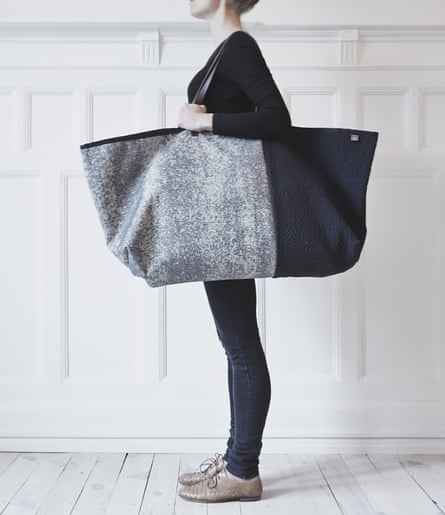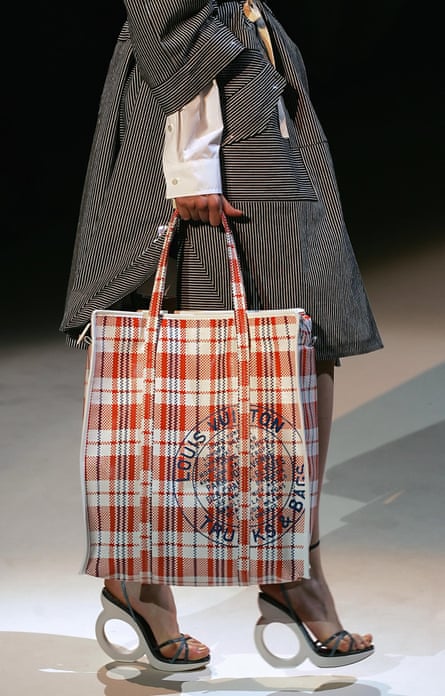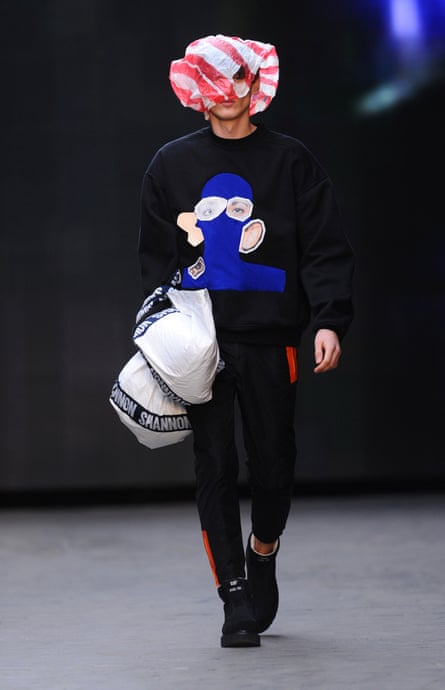The catwalk’s enduring love of supermarkets has bedded in once again, like knotweed in the garden of fashion. Every year, without fail, someone designs something deluxe (a bag, usually) inspired by something found at a supermarket or corner shop, parodying the very consumerism that allows fashion to exist while commenting on the fine line between haute and mass consumer culture.
Take the latest offering from Herman Cph, a Copenhagen-based design studio: it’s set to launch the Limited bag, a sort of polite homage to Ikea’s polypropylene, 19-gallon, 40p Frakta bag. The bags, which comes in blue and black or light blue and dark blue and were created using scraps of fabric from European textile manufacturer Kvadrat, go on sale later this month for about £80.

The trend in supermarket chic arguably peaked last year at Chanel, where Karl Lagerfield transplanted an entire show into a fake supermarket, complete with Chanel-themed flour, oil and eggs, and sent models down the aisle with dainty shopping baskets in the crooks of their arms. It remains one of the most talked-about fashion stories. Fashion has found its sense of humour, the internet cried.

Not everyone is a fan of high fashion parodying the low, deeming the idea that a customer at Chanel is more likely to carry a Chanel basket than an Asda one a bit off-key, a little Marie Antoinette.
Take the recent menswear shows where wunderkind Christopher Shannon sent models down the catwalk with corner-shop bags as hats and jumpers emblazoned with ‘save me’ in Tesco Value-inspired colours, a wincing observation in the wake of this week’s plans to axe 9,000 managerial jobs. In 2012, Jil Sander created the £185 paper bag, an homage to the US-style paper grocery bag, that came in brown coated paper. Sure, it was fun, but spending that much money on a paper bag felt slightly crass. Back in 2007, Louis Vuitton created a natty line of checked laundry bag-style totes for the S/S 2007 line which kick-started a high street trend of carrying the £2 shoppers to work. It even filtered down to the high street, too, with Swedish brand Cheap Monday rolling out a line of denim “paper bags” for £45.

But while mocking something as prosaic as a plastic bag might seem derisory, the reality is that these designers are praising their simple aesthetic. What plastic bags lack in environmental punch they make up for in practicality, affordability and aesthetic – to an extent. Fashion’s relationship with modern consumer culture – think Anya Hindmarch’s metallic crisp packet clutches, Primark’s emoji-emblazoned tees and Ashley William’s Spongebob-print skirts – is as fun and nuanced as the people who buy the products. And isn’t blurring the line between fantasy and reality a fundamental part of fashion?

Comments (…)
Sign in or create your Guardian account to join the discussion